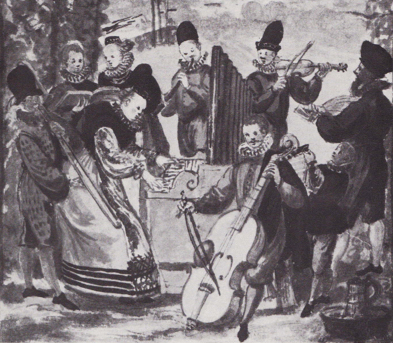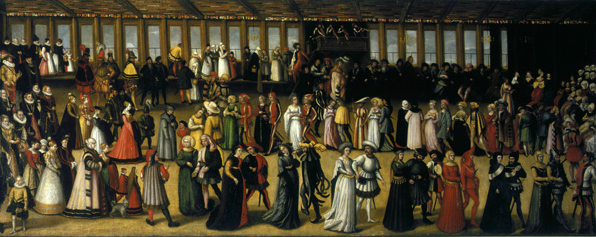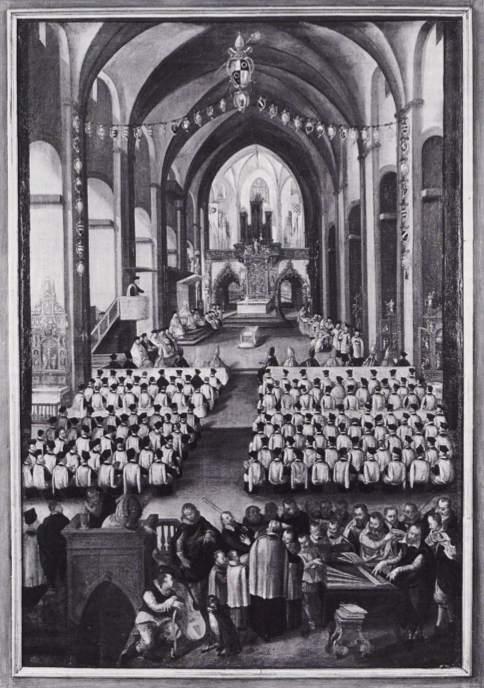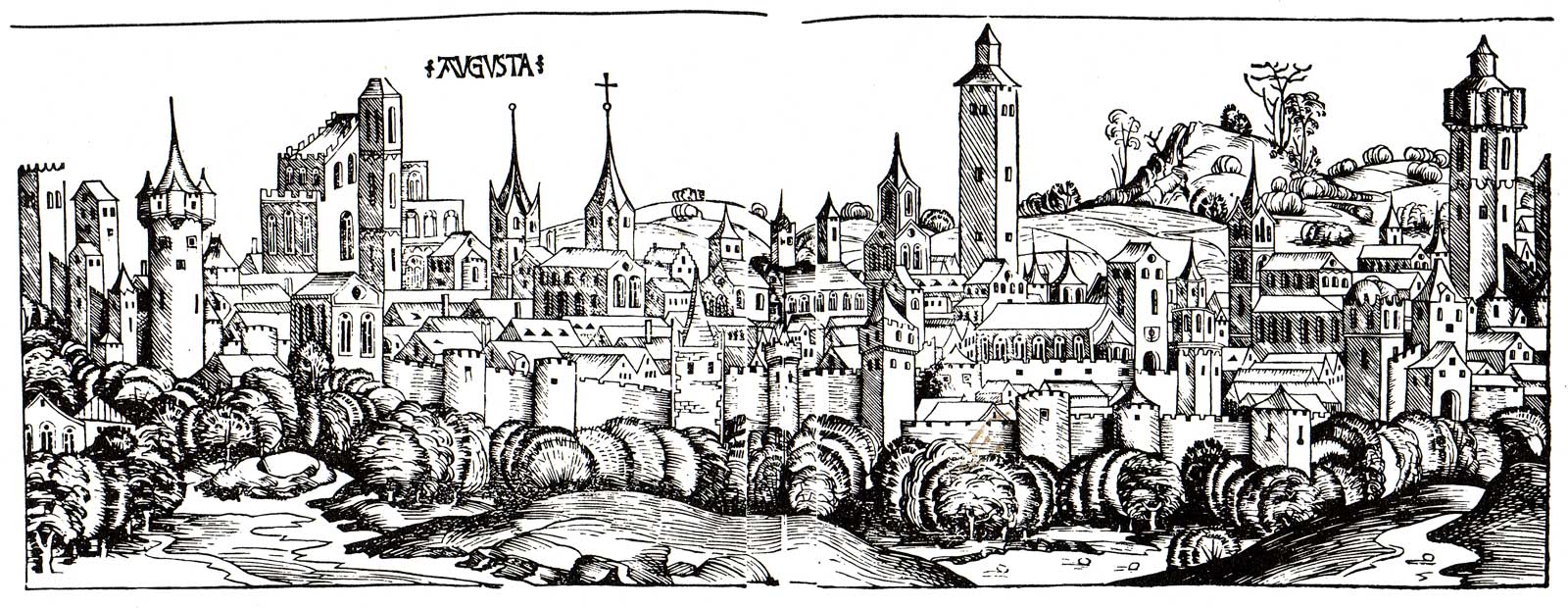Augsburg, second only to Trier among Germany’s oldest cities, has been the site of considerable trombone activity since the trombone’s beginnings in the 15th century. A painting of the Augsburg Cathedral that I recently added to the Trombone History Timeline (17th century, 1st half) spurred me to put together this post. This fairly specialized post illustrates, on a small scale, some noteworthy trends in the early history of the trombone. Notice, for example, early trombone activities and images related to the civic wind band/alta capella, dance music, and sacred music. Many of the sources are from Keith Polk, who has done extensive research on early trombone history in Germany. As usual, full citations for the sources can be found in the Trombone History Bibliography.
______________________
1447—Augsburg, Germany: Trombone is mentioned as part of a civic wind band (Polk, German 112).
1460s—Augsburg, Germany: The city is temporarily without a trombonist for their civic wind band, but continues to hire a trombonist “for especially important dances” (Polk, German 118).
1477—Augsburg, Germany: Augustein Schubinger begins his career as a trombonist, although he is also recognized as a player of lute and cornett during various stages of his career (Polk, Voices and Instruments).
1482—Augsburg, Germany: Ulrich Schubinger, Jr., begins his career as a trombonist. A versatile musician like many of his day, he is later described as a player of “Geigen, pusaunen, lawten, und andern instrumenten” (Polk, Voices and Instruments).
1488—Augsburg, Germany: Renowned trombonist Augustein Schubinger is termed a trumeter in his own home town, highlighting the continuing ambiguity in terminology between trombone and trumpet (Polk, The Trombone).
1509—Augsburg, Germany: A musician by the name of Caspar Egkern serves as trombonist. He later becomes a member of the viol ensemble of Maximilian I (Polk, German 71).
1591—Augsburg, Germany: A woodcut on the title page of Adam Gumpelzhaimer’s Neue Teutsche Geistliche Lieder (re-used for at least one subsequent work) includes a depiction of a female trombonist as part of an apparently all-female ensemble (see below detail; public domain) (Naylor 221; Kinsky 85).
1592-9—Germany: An anonymous painting from the Album of Hieremias Buroner of Augsburg depicts a consort consisting of trombone, 2 singers, positive organ, cornett, bass viol, violin, and lute (see below image; public domain) (Remnant, Musical Instruments of the West 202; London, British Library).
c. 1600—Augsburg, Germany: An oil painting by Abraham Schelhas titled Augsburger Geschlechtertanz depicts an aristocratic dance in Augsburg. The 4 wind musicians providing the music play from a balcony and include a trombonist; the other instruments appear to be cornettos or shawms (see below detail and full image; public domain) (Augsburg, Städtische Kunstsammlung; Salmen, Tanz im 17 151).

c. 1616—Augsburg, Germany: A painting by Thomas Maurer, The Diocesan Synod of 1610 in the Cathedral of Augsburg, includes what may be two trombones situated on opposite sides of the group of musicians, with only the rather long rear bend of the instruments visible (see below detail and full image; public domain) (Chevalley 142; painting housed in choir sancrisy of Augsburg Cathedral; photo by Eberhard Lantz).

c. 1720—Augsburg, Germany: An engraving by Martin Engelbrecht titled Trompeten, Paucken, Posaunen depicts men playing trumpet and kettledrums, with a trombone on a nearby table. The text below the picture says, “Here one demonstrates music for devotion, pleasure and dancing for various types of musical instruments…Music about men and horses can only be satisfied by fighting. Trumpets, timpani, muskets, Barthaune! They make the right sound together. On the other hand, zinken and trombones [posaunen] are needed always in peacetime, as well as in sorrow and times of joy whenever music is well presented” (see below image) (Naylor 100, 197).
